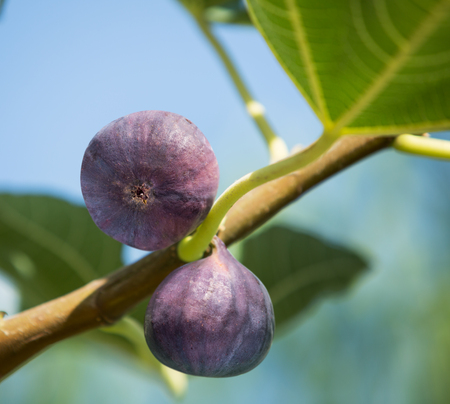Figs
 Often mentioned in the Bible as a sign of peace and prosperity, the fig tree is so ancient, remnants of the fruit have been discovered in Neolithic excavations sites circa 5,000 B.C. Thought to be native to Western Asia or Egypt, figs were cultivated very early throughout the Middle East and Europe and finally reached England and China by the mid-1500s. Spanish missionaries planted orchards in California in the late 19th century, where they still thrive today.
Often mentioned in the Bible as a sign of peace and prosperity, the fig tree is so ancient, remnants of the fruit have been discovered in Neolithic excavations sites circa 5,000 B.C. Thought to be native to Western Asia or Egypt, figs were cultivated very early throughout the Middle East and Europe and finally reached England and China by the mid-1500s. Spanish missionaries planted orchards in California in the late 19th century, where they still thrive today.
Figs are high in fiber and a good source of several essential minerals, including magnesium, manganese, calcium (which promotes bone density), copper, and potassium (which helps lower blood pressure), as well as vitamins, principally K and B6. The fig fruit is also used as a laxative to relieve constipation.
Fig leaf is commonly used for treating diabetes, high cholesterol, and skin conditions such as eczema, psoriasis, and vitiligo.
Some people apply the milky sap (latex) from the tree directly to the skin to treat skin tumors and warts.